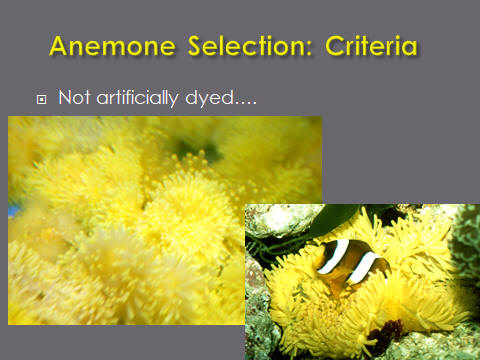|
Related FAQs:
Anemones,
Anemones 2, Anemones 3, Anemones 4, Anemones 5, Anemones 6,
Bubble Tip Anemones,
LTAs,
Caribbean Anemones,
Condylactis, Anemones &
Clownfishes, Anemones & Clowns 2,
Anemone
Identification, Anemone ID 2,
Anemone
Behavior, Anemone Behavior 2,
Anemone Compatibility,
Anemone Compatibility
2,
Anemone
Selection, Anemone Health,
Anemone Health 2,
Anemone Health 3, Anemone Health 4, Anemone Health 5, Anemone Health 6, Anemone Health 8, Anemone Health 9, &
Anemone
Placement,
Anemone
Reproduction, Anemone
Systems, Anemone
Systems 2, Anemone
Systems 3,
Anemone
Lighting, Anemone Lighting 2,
Anemone Lighting 3,
Anemone Lighting
4, Anemone
Feeding, Anemone Feeding 2, Aiptasia,
Other Pest
Anemones, Heteractis
malu,
Related Articles:
Heteractis crispa/Sebae Anemones,
Magnificent Anemones,
Heteractis malu, Invertebrates, Stinging-Celled Animals,
Clownfishes,
Coldwater Anemones,
Bubble Tip Anemones,
LTAs,
Aiptasia/Glass Anemones,
Anemones of the Tropical West Atlantic,
Colored/Dyed
Anemones, Marine Light, &
Lighting,
Water Flow, How Much
is Enough,
/Diversity of Aquatic Life
Series
Anemones for Aquariums:
use, husbandry
Part 2 of
10
Part 1, Part 3, Part 4,
Part 5, Part 6,
Part 7, Part 8,
Part 9, Part 10
|
|
|
By Bob Fenner
|
|
 |
| There seems to be a cyclicity, every few
years folks selling non-tropicals; they won't live in warm water |
 |
| Various colors/dyes are used... on bleached
anemones; almost always fatal |
 |
| A tank of colored S. haddoni |
 |
| Clones are best, though different species can
be mixed with lots of space between to start AFTER the
proscribed slow acclimation process described later |
 |
| |
 |
| |
 |
| |
 |
| |
 |
| |
|
|

